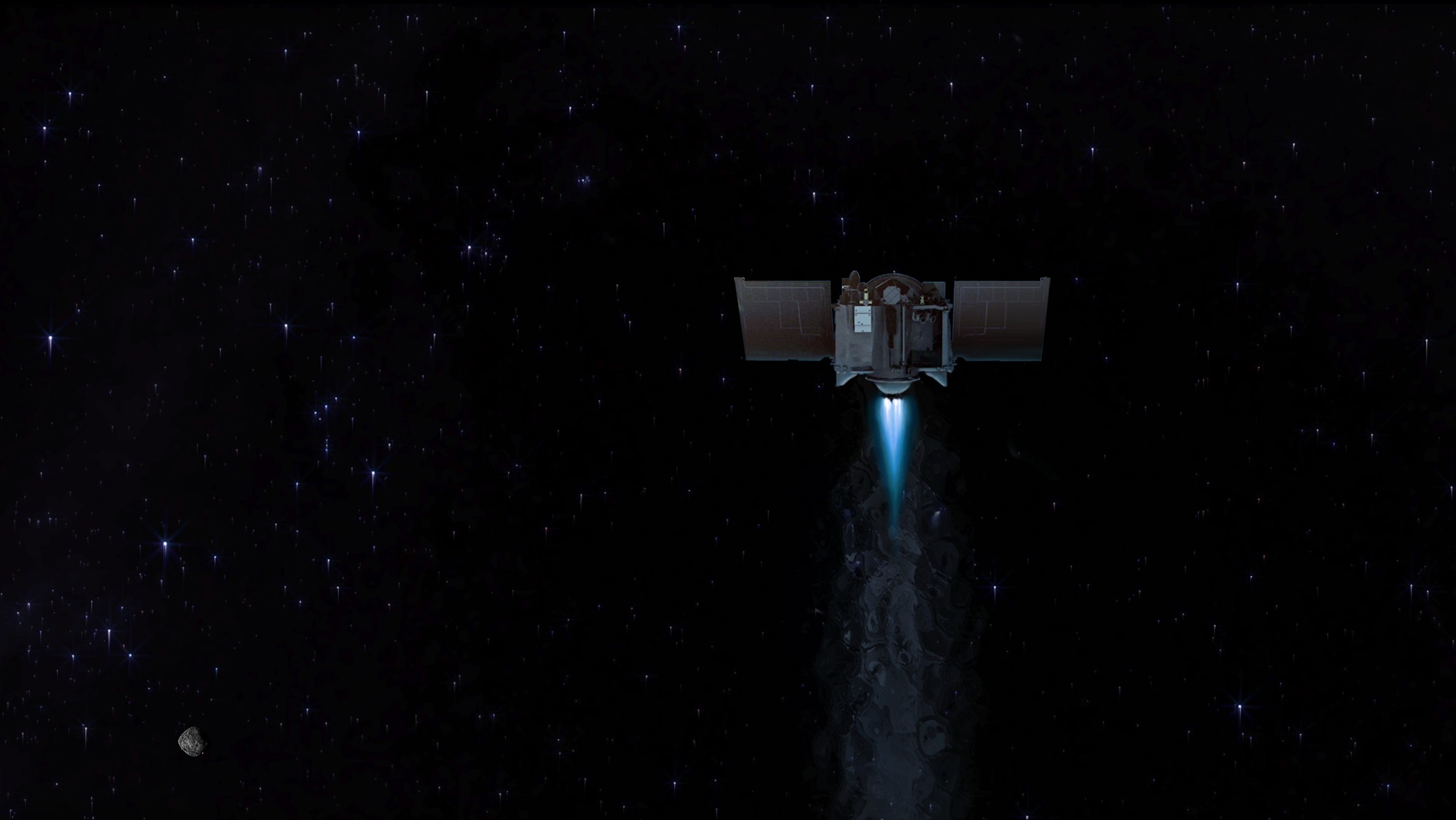The OSIRIS-REX spacecraft, which has just collected samples from the asteroid Bennu, could visit a second space rock:Apophis. The project will soon be submitted to NASA.
On October 21, four years after its launch, the American probe OSIRIS-REX landed on the asteroid Bennu more than 330 million kilometers from Earth. The idea was to collect at least sixty grams of sample with the aim of bringing them back to Earth.
This successful operation, the probe is now scheduled to return to Earth on September 24, 2023 for submit their samples. The material, virtually unchanged for 4.6 billion years , will then be studied by scientists around the world. Nevertheless, this will probably not be the end of the journey.
According to the mission team, OSIRIS-REX does indeed have enough fuel to visit another target. This is one of the most famous near-Earth asteroids:Apophis.
Apophis was once considered the asteroid that posed the greatest threat to Earth. Following its discovery in 2004, astronomers had indeed estimated its chance of hitting our planet in 2029 at one in 37 . Its size (about 340 meters in diameter) then aroused fears. A collision with Earth could indeed have released the equivalent of 1,151 megatons of TNT and decimated an area hundreds of kilometers wide. Follow-up analyzes then calmed the spirits, suggesting all the same that the object could still strike the Earth in 2068.
Last March, a team took advantage of the passage of the asteroid close to Earth to adjust the calculations of its trajectory. Eventually, the object will not hit Earth in 2068 or for the next hundred years. In other words, we are quiet for the moment.
However, Apophis will still pass from close to Earth in April 2029 to just over 32,000 km away , taking it inside the orbits of some geostationary satellites. Moreover, it could even be visible to the naked eye in Europe, Asia and Africa. This brings us to this new project.

Coincidentally, the mission controllers indeed realized that if they asked OSIRIS-REX to perform three flybys of Earth after depositing its samples, it could reach Apophis as it passes Earth 2029 . Like what, celestial mechanics sometimes have some surprises in store for us.
Although Apophis poses no threat to Earth in the short to medium term, its study could tell us a lot about asteroids of this size.
This is just a simple idea supported by calculations. The OSIRIS-REX team will submit its proposal to NASA next month. A decision is expected by April. In the event of a positive return, the ship could then spend eighteen months studying the object . This data could one day be useful in the context of a possible rescue mission involving Apophis itself or another asteroid.
"We really need to understand what we're dealing with", says Jim Bell of Arizona State University. "Is it a solid piece of rock?" Can we change its orbit? Could we destroy it, blast it into tiny pieces, if we had to take drastic measures? "
The DART mission, launched last month, does perform a somewhat similar experiment by crashing into a small asteroid. However, Apophis would be of a different caliber.